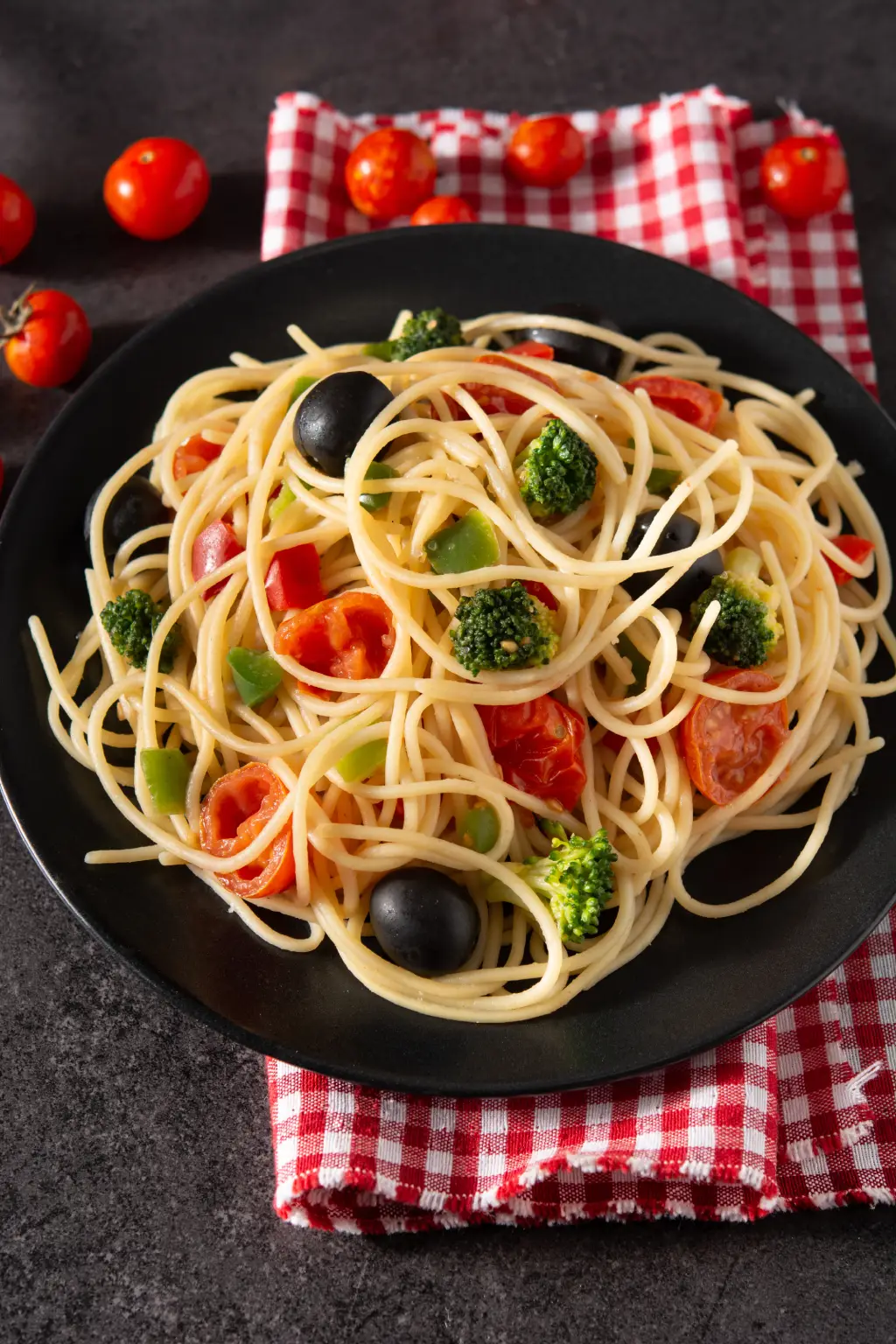Italian cuisine, celebrated globally for its bold flavors and fresh ingredients, offers a misconception that it revolves solely around meat and seafood. Yet, the essence of Italian cooking, with its simplicity and versatility, provides a perfect playground for vegetarian creativity. In exploring vegetarian Italian recipes, we uncover the richness and diversity that meatless Italian dishes offer.
Simplicity at Its Best
Italian cooking emphasizes ingredient quality over complexity. Vegetarian Italian cuisine adopts this principle, using fresh vegetables, aromatic herbs, and rich cheeses to create both nourishing and flavorful dishes.
A Rich Tradition
Many traditional Italian dishes are inherently vegetarian. From the creamy risottos of the north to the vibrant vegetable dishes of the Mediterranean coast, Italy’s regional cuisines offer ample inspiration for vegetarian cooking.
Health Benefits
Embracing vegetarian Italian recipes opens up a world of culinary delights and health benefits. A diet rich in vegetables, legumes, whole grains, and healthy fats is linked to a lower risk of chronic diseases, promoting a healthier lifestyle.
Sustainability
Choosing vegetarian options benefits both health and the planet. Vegetarian Italian cooking, relying on seasonal and locally sourced ingredients, reduces the environmental impact of food production.
Italian cuisine’s adaptability makes it uniquely suited to vegetarian cooking. Whether you’re a long-time vegetarian or looking to incorporate more plant-based meals into your diet, vegetarian Italian recipes offer endless possibilities. From hearty soups and salads to luxurious pastas and pizzas, there’s no shortage of dishes to explore.
By embracing Italian cooking principles—freshness, simplicity, and quality—vegetarian Italian cuisine offers a delicious and healthful way to enjoy Italy’s flavors. Let’s embark on this culinary journey together, discovering the joys and richness of vegetarian Italian recipes.
Essential Ingredients in Vegetarian Italian Cooking
Italian cuisine celebrates flavors, where each ingredient plays a pivotal role in creating simple yet profoundly flavorful dishes. When it comes to vegetarian Italian recipes, certain ingredients are indispensable. These essentials provide a foundation for countless dishes and embody the spirit of Italian cooking.
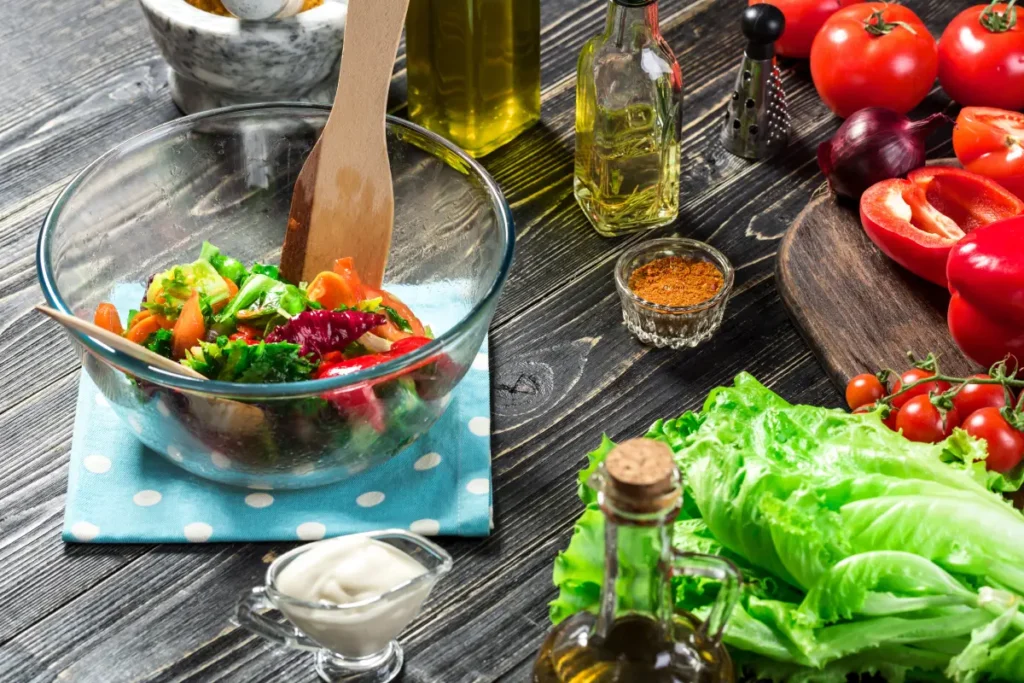
Olive Oil: The Liquid Gold
- Heart of Flavor: Olive oil, beyond a cooking medium, is the essence of Italian cuisine. Its rich, fruity flavor forms the base of almost every Italian dish, from salads to sautés.
- Varieties Matter: The type of olive oil can significantly vary, from robust extra virgin olive oil perfect for dressings and drizzles to lighter varieties suited for cooking. Exploring different types of olive oil can remarkably enhance your dishes.
Fresh Herbs: Aromatic Essentials
Italian cooking is unimaginable without the aromatic lift provided by fresh herbs. Basil, oregano, rosemary, and thyme can transform a simple dish into something extraordinary.
- Basil: Essential for pesto and tomato-based dishes.
- Oregano: Adds depth to sauces and is perfect for seasoning vegetables and pizzas.
- Rosemary and Thyme: Lend a woodsy aroma to roasted dishes and soups.
Cheeses: The Cornerstone of Vegetarian Italian Recipes
In vegetarian Italian cooking, cheese adds richness, depth, and comforting creaminess to dishes. While traditional recipes often feature a variety of cheeses, plant-based alternatives can mimic the originals’ texture and taste.
- Mozzarella: Key in Caprese salads and atop pizzas.
- Ricotta: Versatile for filling pastas like ravioli and for desserts.
- Parmesan (and Vegan Alternatives): Aged Parmesan adds a salty, umami flavor. Vegan alternatives offer a similar taste profile, ideal for sprinkling over pasta and salads.
Vegetables: The Color Palette of Italian Dishes
Vegetables are not just sides but the stars of many Italian dishes. Eggplants, zucchinis, tomatoes, and bell peppers provide the quintessential Italian color, texture, and flavors.
- Tomatoes: The backbone of many sauces.
- Eggplants and Zucchinis: Versatile for grilling, baking, or layering in dishes like lasagna.
- Bell Peppers: Add sweetness and color, perfect for sautés, sauces, and fillings.
Legumes and Grains: The Foundation
Beans, lentils, and grains like polenta and farro are essential in Italian cooking, providing substance and nutrition to vegetarian dishes.
- Beans and Lentils: A protein source used in soups, salads, and to complement pasta dishes.
- Polenta and Farro: Offer a hearty base for toppings and are used in making porridge-like dishes, serving as a gluten-free pasta alternative.
Incorporating these essential ingredients into your vegetarian Italian recipes not only ensures authenticity but also guarantees a meal that’s satisfying and full of flavor. With these foundations, the possibilities for creating vibrant, nourishing, and delicious vegetarian Italian dishes are endless.
Classic Vegetarian Italian Recipes
Italian cuisine offers a treasure trove of dishes that delight the palate without the need for meat. These classic vegetarian Italian recipes showcase the rich diversity and flavorful depth of Italy’s culinary tradition. From the rolling hills of Tuscany to the sun-kissed coast of Sicily, let’s explore dishes that bring the essence of Italy right to your table.
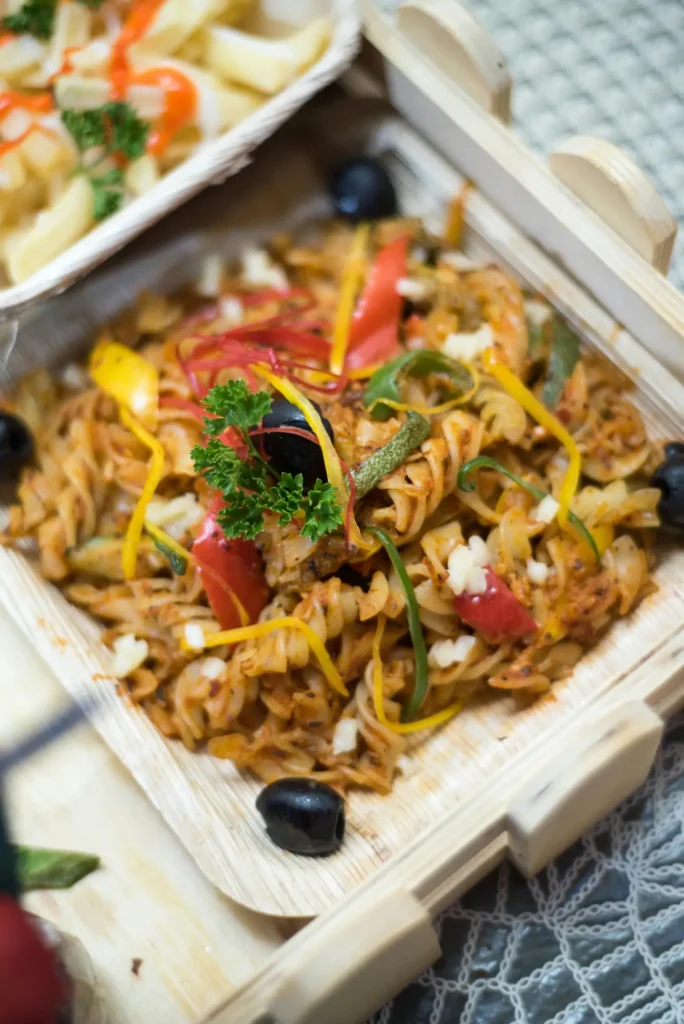
Pasta Dishes
Italian cuisine is synonymous with pasta, offering a universe of vegetarian options that are both comforting and delicious.
- Homemade Potato Gnocchi: Delightful dough dumplings, best served with a sage butter sauce or a simple tomato basil sauce.
- Four-Cheese Stuffed Shells: Jumbo pasta shells filled with a creamy mixture of cheeses, baked in a marinara sauce.
- Penne All’Arrabiata: A fiery dish combining tomatoes, garlic, and red chili peppers, tossed with penne pasta.
Soups and Salads
Italian soups and salads celebrate the country’s bountiful produce, perfect for lighter meals or starters.
- Minestrone Soup: A hearty vegetable soup incorporating whatever vegetables you have on hand. For those looking to expand their repertoire of vegetarian soup recipes, explore the world of vegetarian soups with our guide on “Vegetarian Soup Dumplings: A Delicious Guide to Making and Enjoying.
- Caprese Salad: Fresh tomatoes, mozzarella, basil, and olive oil embody the Italian culinary philosophy.
Main Courses
Vegetarian main courses in Italian cuisine feature vegetables and cheeses in starring roles.
- Eggplant Parmesan: Breaded and fried eggplant slices, layered with marinara sauce and mozzarella cheese, and baked.
- Vegetable Lasagna: Layers of noodles, ricotta cheese, spinach, zucchini, mushrooms, and tomato sauce.
Sides and Appetizers
No Italian meal is complete without sides and appetizers to complement the main courses.
- Bruschetta al Pomodoro: Toasted bread topped with a mixture of chopped tomatoes, basil, garlic, and olive oil.
- Stuffed Bell Peppers: Bell peppers filled with a flavorful mixture of rice, tomatoes, herbs, and cheese, then baked.
Desserts
Italian desserts, known for their simplicity and rich flavors, often feature fruits, nuts, and cheeses.
- Tiramisu: Layering espresso-soaked ladyfingers with a whipped mixture of eggs, sugar, and mascarpone cheese.
- Panna Cotta: A creamy dessert made with sweetened cream thickened with gelatin, flavored with vanilla, and served with a berry coulis.
These vegetarian Italian recipes are just the beginning of what Italy’s culinary landscape has to offer. Each dish, from the simplest salad to the most layered lasagna, carries centuries of tradition and the unmistakable flavors of Italy. Whether you’re a seasoned vegetarian or looking to incorporate more plant-based meals into your diet, these recipes offer delicious options to satisfy any palate.
Modern Twists on Traditional Dishes
In the ever-evolving culinary world, Italian cuisine stands out for its adaptability while maintaining simplicity and quality. Modern twists on traditional dishes have introduced a new dimension to vegetarian Italian recipes, blending classic flavors with contemporary dietary preferences and cooking techniques.
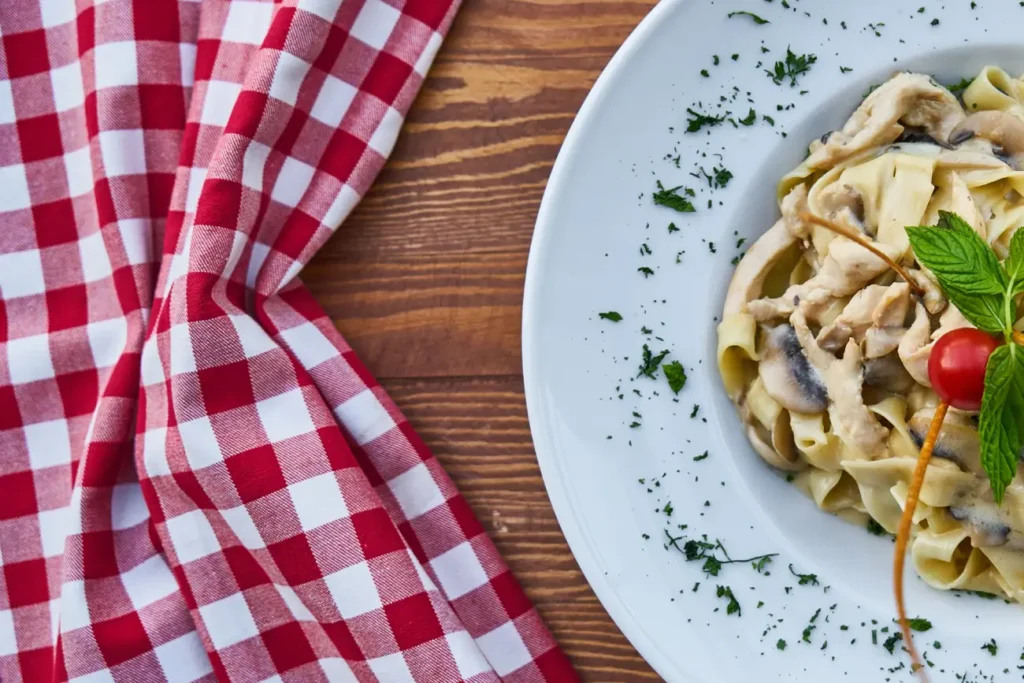
Innovative Pasta Creations
Pasta, the quintessential Italian staple, serves as a canvas for creativity. Modern interpretations include:
- Zucchini Noodle (Zoodle) Carbonara: A low-carb, gluten-free take on the classic, using spiralized zucchini instead of pasta.
- Vegan Mushroom Bolognese: Utilizing mushrooms for their meaty texture in a hearty, meat-free version of the traditional sauce.
Reimagined Risottos
Risotto, a beloved rice dish, has seen modern updates catering to health-conscious eaters and those seeking new flavors. For example, Barley Risotto with Roasted Vegetables offers a whole-grain twist, incorporating barley and roasted seasonal vegetables for added fiber and a nutty flavor.
For more vegan options, Minimalist Baker offers resources for simple vegan Italian recipes, including innovative risotto takes.
Contemporary Vegetarian Italian Recipes
The essence of Italian cooking, emphasizing fresh, high-quality ingredients, lends itself beautifully to vegetarian and vegan adaptations. Contemporary updates include:
- Vegan Caprese Salad: Using vegan mozzarella alternatives, thick slices of tomatoes, and fresh basil, drizzled with balsamic reduction.
- Butternut Squash Lasagna Rolls: Thinly sliced butternut squash as the “noodle,” rolled with a ricotta-spinach filling and baked.
Desserts with a Difference
Traditional Italian desserts have been reimagined to suit modern tastes and dietary requirements, such as:
- Vegan Tiramisu: Using coconut cream and cashew-based mascarpone for a dairy-free version of the classic dessert.
- Chia Seed Panna Cotta: A healthier, vegan-friendly take using chia seeds and almond milk, flavored with vanilla.
These modern twists on traditional dishes showcase Italian cuisine’s versatility and adaptability, proving classic recipes can be reinvented for today’s dietary preferences. Whether you’re a vegetarian or exploring plant-based eating, these contemporary vegetarian Italian recipes offer exciting, delicious options that honor Italy’s rich culinary heritage while embracing modern cooking innovations.
Cooking Tips and Techniques
Mastering Italian cooking goes beyond following recipes; it’s about embracing the cuisine’s spirit, which celebrates ingredient quality, simplicity, and the joy of shared meals. Here, we explore essential cooking tips and techniques to elevate your vegetarian Italian recipes.
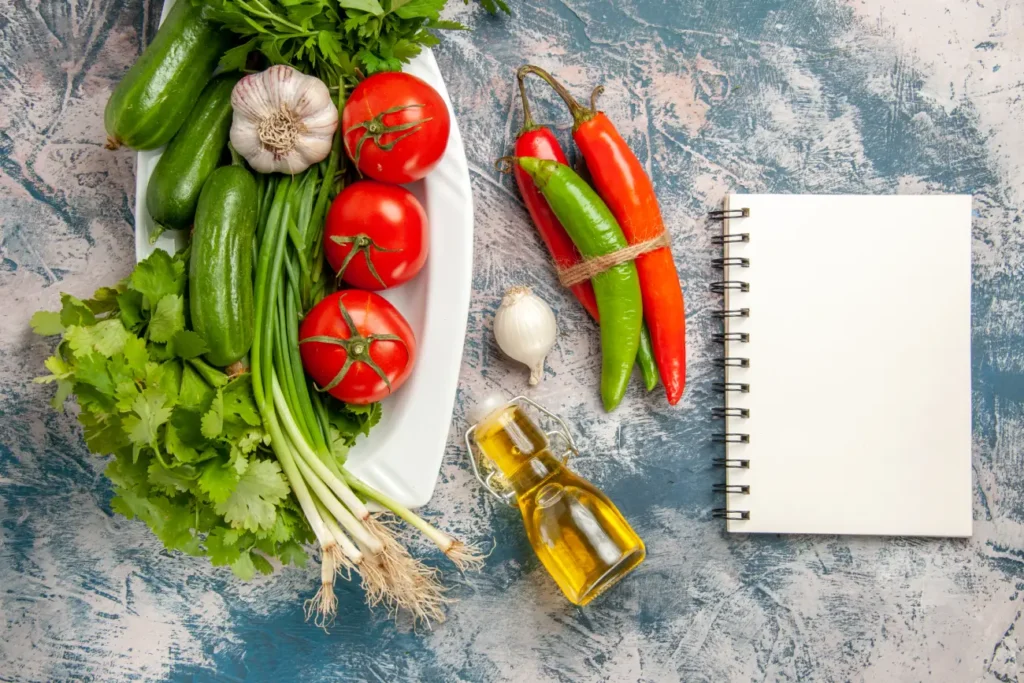
Perfecting Pasta
- Cooking Pasta Al Dente: Achieving the perfect texture by cooking pasta until it is al dente, firm to the bite.
- Salting the Water: Enhancing pasta flavor by adding salt to the boiling water, making it taste as salty as the sea.
Sauces and Seasonings
Creating a balance of flavors is crucial in Italian cooking, with fresh, high-quality ingredients forming the delicious foundation of vegetarian Italian recipes.
- Building Flavor Layers: Starting with a soffritto, a mix of finely chopped onions, carrots, and celery, sautéed in olive oil.
- Using Fresh Herbs: Incorporating fresh herbs like basil, oregano, and rosemary at the end of cooking to preserve their vibrant flavors.
For a deeper dive into authentic Italian cooking methods, Serious Eats offers detailed guides and expert advice for mastering Italian cooking techniques.
The Art of Italian Baking
- Bread and Pizza Dough: Achieving the perfect crust begins with the dough, allowing it to rise slowly, preferably overnight.
- Temperature Matters: Ensuring a hot oven (around 475°F or 246°C) for crispy pizza crusts and perfectly golden focaccia.
Incorporating these tips and techniques into your cooking not only enhances your dishes’ flavors and textures but also brings a touch of Italian authenticity to your vegetarian creations. Whether you’re an experienced cook or just starting, these insights will help you celebrate the rich traditions and simple pleasures of Italian cuisine.
FAQs
Italian cuisine, with its rich flavors and diverse ingredients, offers a broad range of vegetarian options. Here, we address some frequently asked questions about vegetarian Italian cooking, shedding light on the delicious possibilities that await.
- What is the most famous vegetarian dish in Italy?
- Pasta alla Norma, a Sicilian specialty featuring pasta with a savory sauce of tomatoes, fried eggplant, grated ricotta salata cheese, and basil, is arguably the most famous vegetarian dish in Italy.
- Are there vegetarian options in Italy?
- Yes, Italy abounds with vegetarian options. Dishes like Risotto, Caprese Salad, and Gnocchi exemplify the vegetarian fare available, with many traditional recipes being naturally vegetarian or easily adaptable.
- What Italian food has no garlic?
- While garlic is a staple in many dishes, some traditional foods like Risotto alla Milanese, flavored with saffron and often garlic-free, and many Italian breads, such as Focaccia and Ciabatta, are made without garlic, focusing on herbs and olive oil for flavor.
- What vegetables do Italians eat for dinner?
- Italians enjoy a wide variety of vegetables for dinner, often as side dishes or incorporated into main courses. Common vegetables include tomatoes, zucchini, eggplants, bell peppers, and leafy greens like spinach and kale, with seasonality playing a significant role in Italian cooking.
These FAQs underscore the adaptability and breadth of vegetarian Italian recipes, demonstrating how traditional ingredients and dishes can cater to vegetarian preferences without sacrificing flavor or authenticity. Whether dining in Italy or cooking at home, a plethora of vegetarian options awaits exploration.
Conclusion
Exploring vegetarian Italian recipes unveils a world of culinary delights that are both nourishing and satisfying. Emphasizing fresh ingredients and simple yet robust flavors, Italian cuisine offers vegetarians a vast array of delicious and diverse dishes. This journey through vegetarian Italian cooking has introduced us to essential ingredients, classic and modern recipes, cooking tips, and answered common questions.
- Embrace Simplicity: Italian cooking’s beauty lies in its simplicity, with fresh, quality ingredients shining in even the simplest dishes.
- Explore and Experiment: There’s always room for creativity, whether trying a new vegetable in a traditional dish or applying a modern twist to a classic recipe.
- Seasonality is Key: Eating seasonally enhances your dishes’ flavor and aligns with the Italian way of life, emphasizing the connection to the seasons.
- Health and Pleasure Combined: Vegetarian Italian dishes blend health benefits and culinary enjoyment, showing that taste doesn’t have to be compromised for a healthy diet.
In conclusion, vegetarian Italian recipes offer a delicious way to explore Italy’s rich culinary heritage from your kitchen. Whether you’re a seasoned vegetarian or looking to add more plant-based meals to your diet, Italian cuisine provides endless inspiration. Gather your ingredients, embrace the Italian culinary philosophy, and let the magic of Italian cooking bring warmth and joy to your table.

